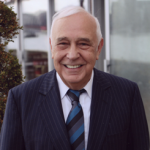LONDON – In last month’s European Parliament election, euroskeptic and extremist parties won 25% of the popular vote, with the biggest gains chalked up in France, the United Kingdom, and Greece. These results were widely, and correctly, interpreted as showing the degree of disconnect between an arrogant European elite and ordinary citizens.
Less noticed, because less obviously political, are today’s intellectual rumblings, of which French economist Thomas Piketty’s Capital in the Twenty-First Century, a withering indictment of growing inequality, is the latest manifestation. We may be witnessing the beginning of the end of the neoliberal capitalist consensus that has prevailed throughout the West since the 1980s – and that many claim led to the economic disaster of 2008-2009.
Particularly important is the growing discontent of economics students with the university curriculum. Undergraduates’ discontent matters, because economics has long been the West’s political lodestar.
This discontent was born in the “post-autistic economics movement,” which started in Paris in 2000, and spread to the United States, Australia, and New Zealand. Its adherents’ main complaint was that the mainstream economics taught to students had become a branch of mathematics, disconnected from reality.
The revolt made little progress in the years of the “Great Moderation” of the 2000s, but was revived following the 2008 crisis. Two important links with the earlier network are US economist James Galbraith, the son of John Kenneth Galbraith, and British economist Ha-Joon Chang, author of the best-selling 23 Things They Don’t Tell You about Capitalism.
In a manifesto published in April, economics students at the University of Manchester advocated an approach “that begins with economic phenomena and then gives students a toolkit to evaluate how well different perspectives can explain it,” rather than with mathematical models based on unreal assumptions. Significantly, Andrew Haldane, Executive Director for Financial Stability at the Bank of England, wrote the introduction.
The Manchester students argue that “the mainstream within the discipline (neoclassical theory) has excluded all dissenting opinion, and the crisis is arguably the ultimate price of this exclusion. Alternative approaches such as Post-Keynesian, Marxist, and Austrian economics (as well as many others) have been marginalized. The same can be said of the history of the discipline.” As a result, students have little awareness of neoclassical theory’s limits, much less alternatives to it.
The aim, according to the students, should be to “bridge disciplines within and outside of economics.” Economics should not be divorced from psychology, politics, history, philosophy, and so on. Students are especially keen to study issues like inequality, the role of ethics and fairness in economics (as opposed to the prevailing focus on profit maximization), and the economic consequences of climate change.
The idea is that such intellectual cross-fertilization would help students understand recent economic phenomena better and improve economic theory. From this point of view, everyone stands to benefit from curriculum reform.
The deeper message is that mainstream economics is in fact an ideology – the ideology of the free market. Its tools and assumptions define its topics. If we assume perfect rationality and complete markets, we are debarred from exploring the causes of large-scale economic failures. Unfortunately, such assumptions have a profound influence on policy.
The efficient-market hypothesis – the belief that financial markets price risks correctly on average – provided the intellectual argument for extensive deregulation of banking in the 1980s and 1990s. Similarly, the austerity policies that Europe used to fight the recession from 2010 on were based on the belief that there was no recession to fight.
These ideas were tailored to the views of the financial oligarchy. But the tools of economics, as currently taught, provide little scope for investigating the links between economists’ ideas and the structures of power.
Today’s “post-crash” students are right. So what is keeping the mainstream’s intellectual apparatus going?
For starters, economics teaching and research is deeply embedded in an institutional structure that, as with any ideological movement, rewards orthodoxy and penalizes heresy. The great classics of economics, from Smith to Ricardo to Veblen, go untaught. Research funding is allocated on the basis of publication in academic journals that espouse the neoclassical perspective. Publication in such journals is also the basis of promotion.
Moreover, it has become an article of faith that any move toward a more open or “pluralist” approach to economics portends regression to “pre-scientific” modes of thought, just as the results of the European Parliament election threaten to revive a more primitive mode of politics.
Yet institutions and ideologies cannot survive by mere incantation or reminders of past horrors. They have to address and account for the contemporary world of lived experience.
For now, the best that curriculum reform can do is to remind students that economics is not a science like physics, and that it has a much richer history than is to be found in the standard textbooks. In his book Economics of Good and Evil, the Czech economist Tomáš Sedláček shows that what we call “economics” is only a formalized fragment of a much wider range of thinking about economic life, stretching from the Sumerian epic of Gilgamesh to the meta-mathematics of today.
Indeed, mainstream economics is a pitifully thin distillation of historical wisdom on the topics that it addresses. It should be applied to whatever practical problems it can solve; but its tools and assumptions should always be in creative tension with other beliefs concerning human wellbeing and flourishing. What students are taught today certainly does not deserve its imperial status in social thought.



